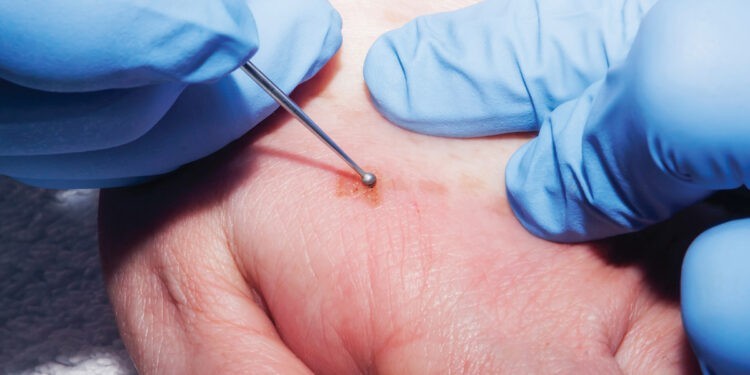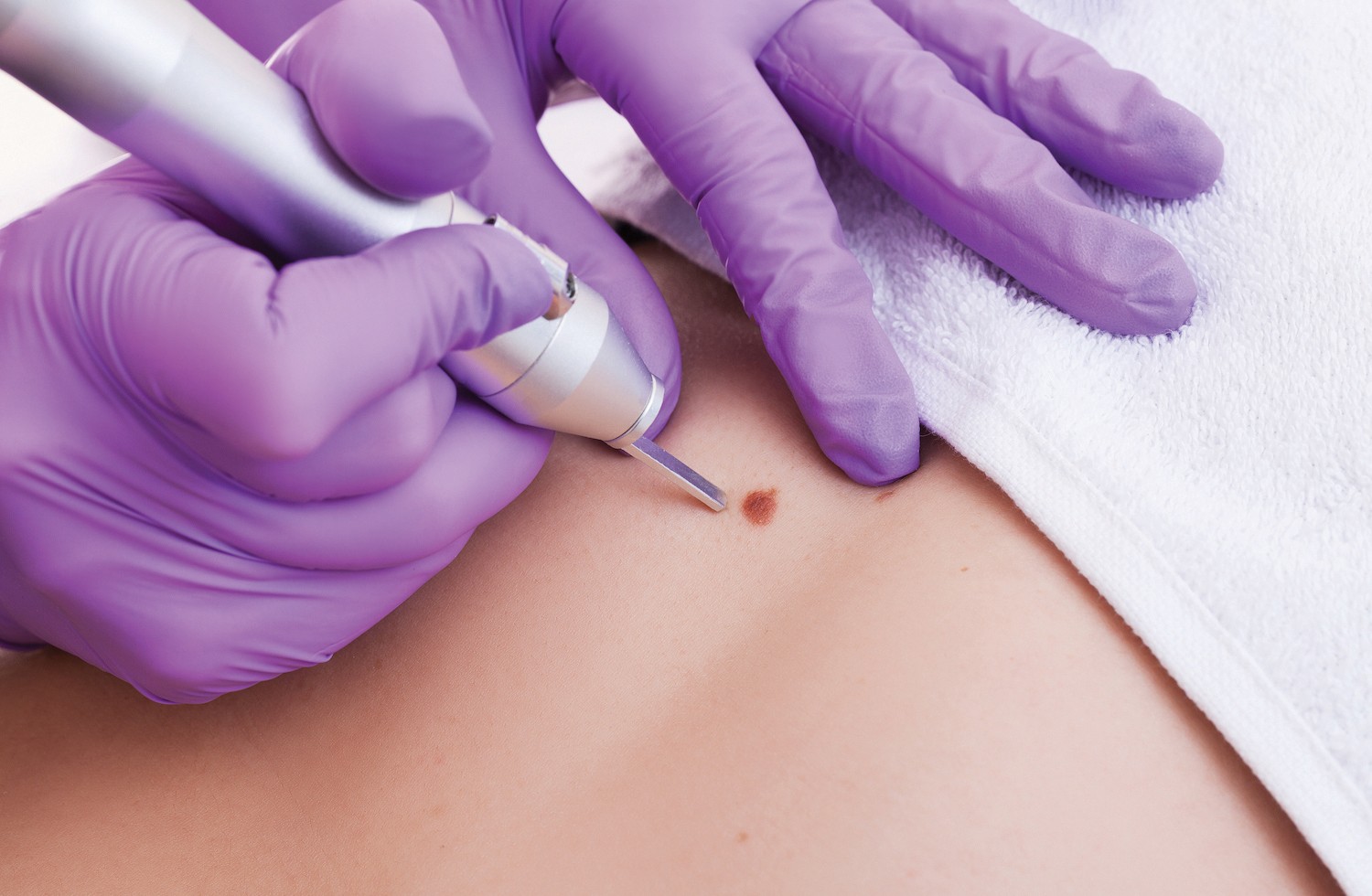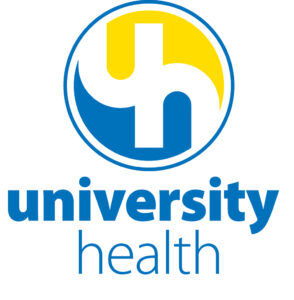Precision and Preservation: Remarkable Mohs Micrographic Surgery in Dermatologic Oncology

Story by Jeanie Edgmon
Skin cancer is one of the most common types of cancer in the United States, affecting one in five Americans, according to the American Academy of Dermatology Association. It is estimated that nearly 9,500 people in the U.S. are diagnosed with skin cancer every day. Tragically, 20 will die from melanoma each day. While common and potentially deadly, skin cancer is also highly treatable when discovered early.
 For anyone needing skin cancer treatment, it is important to explore the various surgical techniques available. Today, one of the most common and successful is Mohs micrographic surgery. Healthy Kansas City spoke with Michael Siscos, MD, of University Health Dermatology to learn more.
For anyone needing skin cancer treatment, it is important to explore the various surgical techniques available. Today, one of the most common and successful is Mohs micrographic surgery. Healthy Kansas City spoke with Michael Siscos, MD, of University Health Dermatology to learn more.
Historical Evolution of Mohs
Mohs micrographic surgery stands as a pinnacle of precision in dermatological oncology, designed specifically for the removal of skin cancers with a focus on conserving healthy tissue and ensuring the complete removal of cancerous cells. This surgical technique, innovated by Dr. Frederic Mohs in the 1930s, has evolved substantially over the decades, becoming the gold standard for the treatment of various skin cancers, especially in areas where aesthetic and functional outcomes are paramount.
Initially, Mohs surgery was a chemosurgery, where a fixative paste was applied to the tumor site before excision, to help in the examination of cancer cells. However, this approach has been refined to what is now known as the fresh tissue technique, eliminating the need for the fixative, and allowing for immediate microscopic examination of excised tissues. This shift has streamlined the procedure and enhanced patient comfort and recovery time.
The Mohs Surgical Procedure
Mohs surgery is distinguished by its cycle of tissue excision and microscopic examination, all performed in a single visit. The process begins with the surgical removal of the visible tumor and a thin layer of surrounding tissue. This specimen is meticulously mapped and divided into sections, which are then color-coded to correlate with their original location on the patient’s skin.
“The Mohs procedure for skin cancers involves the inclusion of “Real Time” pathology of the excised tissues while the surgery is in progress to assure removal of the entire suspect lesion, versus the “cut and wait” process used in other procedures,” explained Dr. Siscos
These sections are processed and examined immediately under a microscope to identify the presence of cancer cells. If cancer is found at the periphery of a section, the surgeon returns to the corresponding area on the patient to remove another layer of tissue. This cycle repeats until microscopic analysis confirms the absence of cancer cells, ensuring the complete removal of the malignancy while sparing as much healthy tissue as possible.
“Mohs is typically performed as an outpatient procedure done under local anesthetic. It is painless, although some patients experience a burning sensation when receiving the anesthetic injection,” Dr. Siscos continued.

Advantages and Innovations
Mohs surgery is recognized as a leading treatment in dermatology, particularly for addressing skin cancer with an unmatched level of precision and effectiveness. It shines with the highest cure rates in the field, boasting up to a 99% success rate, making it the go-to option for treating aggressive and recurrent skin cancers.
One of the most significant benefits of Mohs surgery is its tissue-sparing technique. Unlike other treatments, Mohs surgery meticulously targets and removes only the cancerous tissue, leaving the surrounding healthy tissue untouched. This approach leads to smaller surgical wounds, resulting in better healing and less noticeable scars, which is particularly beneficial for operations on the face or other visible areas.
Another standout feature is its use of real-time microscopic analysis. This allows doctors to accurately identify cancerous cells during the procedure, ensuring that all the cancer is removed while minimizing the impact on healthy tissue. This precision significantly cuts down the need for repeat surgeries, offering patients a more efficient and effective treatment option.
Mohs surgery is also uniquely suited for complex cases, especially for cancers located in sensitive or critical areas, where preserving as much tissue as possible is essential for both functional and aesthetic reasons. This makes it a preferred method for treating skin cancer on parts of the body where appearance matters, such as the face, without compromising the treatment’s effectiveness.
Clinical Applications: Beyond Basal and Squamous Cell Carcinomas
While Mohs surgery is primarily used for the treatment of basal and squamous cell carcinomas, its application has expanded to include certain types of melanoma and other rare skin cancers, especially those located in cosmetically sensitive or functionally critical areas such as the eyelids, nose, ears, and lips. It is also the treatment of choice for tumors with aggressive histological features, poorly defined borders, or those that have recurred after previous treatment.

Patient Considerations and Recovery
Patients considering Mohs surgery should talk with their dermatologic surgeon to understand the procedure, its potential risks, and the post-operative care required. While Mohs surgery is generally safe, with complications being rare and typically minor, patients need to follow post-operative care instructions closely to ensure optimal healing and aesthetic results.
Recovery time from Mohs surgery varies, depending on the extent of the procedure and the individual’s healing response. The wound care regimen may include cleaning and dressing the wound, managing pain, and minimizing activities that could disrupt the surgical site. Advanced wound repair techniques, including primary closure, skin grafting, or the use of local flaps, may be used to encourage healing and improve cosmetic outcomes.
The Future of Mohs Surgery: A Horizon of Innovation
The field of Mohs surgery is on the cusp of further innovations, with research focused on improving surgical techniques, enhancing histopathological analysis for faster and more accurate cancer detection, and developing new reconstructive strategies to improve cosmetic outcomes. The advent of teledermatology and artificial intelligence also holds promise for remote diagnosis and planning, potentially expanding access to this highly specialized treatment.
The Indispensable Role of Mohs Surgery in Dermatologic Oncology
Mohs micrographic surgery embodies the intersection of surgical precision, oncologic thoroughness, and cosmetic mindfulness. Its unparalleled success rates, combined with the preservation of healthy tissue, have established it as a cornerstone in the treatment of skin cancer.

For more information on Dr. Siscos and Mohs Surgery, contact University Health Dermatology at 1-816-307-9571
2101 Charlotte Street, Kansas City, MO 64108






